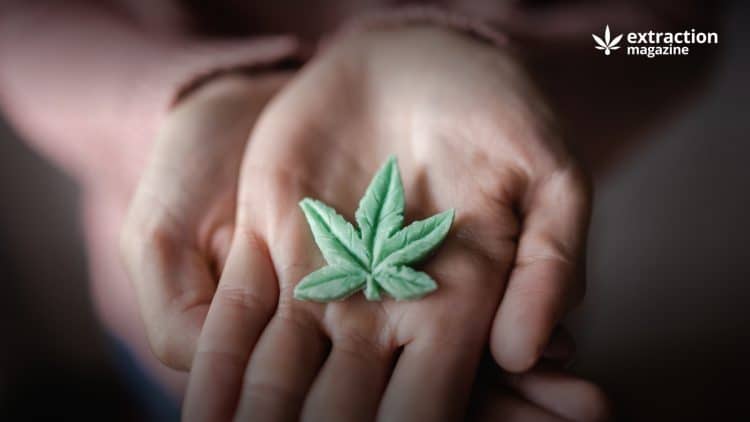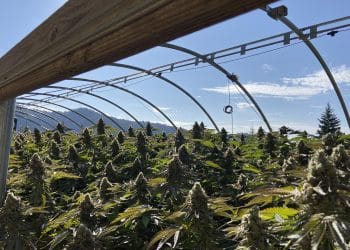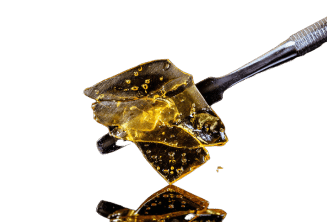Health Canada recently made a decision that cannabis edibles were any product that could be deemed food or drink. Multiple companies had been using a loophole to classify their products as extracts instead of edibles to allow them to sell products with higher tetrahydrocannabinol (THC) content. Now they have until May 31 to reclassify or redevelop their products, or else they face being in non-compliance with Health Canada’s regulations.
Any time a product goes from an illegal market to a regulated one, legal challenges develop. This applies both to market participants and regulators. For five cannabis manufacturers operating in Canada: Indiva, Vortex, OrganiGram, Loosh, and Aurora Cannabis Company, those legal obstacles are coming to fruition. Health Canada, the federal regulatory body in charge of cannabis regulation, determined these companies were out of regulatory bounds in terms of how they classified their cannabis products.
A deadline to correct this error is rapidly approaching, or else they risk losing their place in this developing market.
The Regulatory Concerns
Health Canada’s primary concern revolves around THC content allowed per product. This is not uniform for all cannabis products, and varies based on the product’s classification. In terms of flowered cannabis, which has seen a rise in potency, there is minimal concern. Instead, the issue comes from defining the differences between cannabis edibles and extracts. Edibles and extracts rely on synthetic infusion of THC compared to organic growth. This means manufacturers can increase the concentration of THC to gargantuan levels.
To help protect consumers from overconsumption of THC, Health Canada released a compliance statement determining the differences between cannabis extracts and edibles.
Edibles: are products that are intended to be consumed as food or drinks. This could include products that have gone through THC extraction, but it may also include dried or fresh cannabis from any part of the plant.
Extracts: materials that have gone through the extraction process, but do not include food or topical products of any kind.
Health Canada also goes on to include examples of what may constitute food to clear up any ambiguity in these statements. One primary reason for this determination has to do with how cannabis is metabolized when it is ingested orally compared to pulmonary or dermal absorption.
Health Canada’s concerns pertain to the health risks associated with cannabis as edibles, so they placed a hard limit of 10 mg of THC per package.
To skirt this regulation, these five cannabis companies classified their products as extracts instead of edibles, giving them a loophole to raise the ceiling for their THC content. In the case of Indiva Limited, their cannabis infused lozenges contained 100 mg, 250 mg, and 500 mg of THC per package, pushing them well beyond the 10 mg limit. The companies’ argument was that since these products went through THC extraction, they could be classified as extracts. This recent decision by Health Canada is forcing them all to pivot.
The Looming Deadline
Health Canada set the deadline as May 31 first for these five companies, and any other non compliant companies, to correct their classification issues.
The clock is ticking, and cannabis manufacturers have limited recourse.
The first option requires them to start over with production. They cannot simply reclassify their existing products because the THC content is too high. Therefore, they have to return to the lab to design similar products with significantly lower THC content that allows them to meet the legal criteria. This is not ideal, as it will require a significant investment of both time and capital to utilize their existing extraction methods.
The second option is similar to the first, but it requires reworking their existing products into new ones that will not be eaten in any way. That could mean concentrates or vapes, but cannot include edibles or topical ointments. This also would require a significant shift in their manufacturing process.
Both of these strategies have an added complication in the form of the Notice of New Cannabis Products (NNCP). NNCPs are the regulatory procedures that any new cannabis products must go through prior to being released on the market.
In order to confirm the product is safe for human consumption, and that it is following any applicable laws, applications must be submitted at least 60 days prior to any products being released on the market. Health Canada first notified these five companies on March 3, meaning that each company had slightly less than a month to make any manufacturing adjustments to meet this 60-day deadline. This looming deadline of May 31st, actually has a hidden deadline built into it to ensure legal compliance.
To avoid removing their products from the marketplace, these manufacturers have one last option. Depending on what the concentration of THC is per food item, it may be possible to reclassify their products as food if they limit the number of items per package. For example, if one gummy has 5 mg of THC, instead of selling 20 in a package that adds up to 100 mg, they could sell two. This may work as a short term solution, but in the long term it is not realistic or feasible.
Health Canada has also stated that any companies who are not in noncompliance will be subject to punishments laid out in the Compliance and enforcement policy for the Cannabis Act. Punishments range from calls or letters informing parties of their offense to fines up to $1 million CAD and the revocation of federal licenses.
Unintended Consequences
While these companies recognize that Health Canada has the best intentions, they are quick to point out the possible unintended consequences of this decision. There is a market that exists for higher THC content edibles, or else the products wouldn’t sell. With this in mind, over regulation does not reduce the demand, it forces customers to turn to illegal markets as an alternative. This creates ripple effects which lead to lower safety standards, lost tax revenue, and increased crime rates outside the drug industry. Additionally, just because products are limited to 10 mg of THC per package doesn’t guarantee that customers will limit themselves to one package. Consumers may still be facing the risk of excessive THC consumption, the only difference is in how the products are packaged. The goal of cannabis legalization should be increased safety for all parties involved, including manufacturers and distributors. While Health Canada appears to be attempting this, some flexibility may be required to ensure their goals are ultimately achieved.
Reference:
- Health Canada. (2019, December 9). Guide on composition requirements for cannabis products. Canada.ca. https://www.canada.ca/en/services/health/publications/drugs-health-products/composition-requirements-cannabis-products/guide.html
- Government of Canada, Health Canada, Communications and Public Affairs Branch, Public Affairs Directorate. (2023, March 3). Cannabis edibles incorrectly sold as cannabis extracts may lead to overconsumption of Delta-9-tetrahydrocannabinol (THC) – Recalls, advisories and safety alerts – Canada.ca. https://recalls-rappels.canada.ca/en/alert-recall/cannabis-edibles-incorrectly-sold-cannabis-extracts-may-lead-overconsumption-delta-9
- Bou-Maroun, E., & Besacier, F. (2017b). A study of cannabis potency in France over a 25 years period (1992–2016). Forensic Science International, 272, 72–80. https://doi.org/10.1016/j.forsciint.2017.01.007
- Classification of edible cannabis. (2023, March 3). Canada.ca. https://www.canada.ca/en/health-canada/services/cannabis-regulations-licensed-producers/classification-edible-cannabis.html
- Law, B., et al. “Forensic aspects of the metabolism and excretion of cannabinoids following oral ingestion of cannabis resin.” Journal of Pharmacy and Pharmacology 36.5 (1984): 289-294.
- Grewal, J., & Loh, L. C. (2020). Health considerations of the legalization of cannabis edibles. Canadian Medical Association Journal, 192(1), E1–E2. https://doi.org/10.1503/cmaj.191217
- Limited, I. (2023, March 14). PRODUCT UPDATE ON INDIVA LOZENGES. https://www.prnewswire.com/news-releases/product-update-on-indiva-lozenges-301771179.html
- Lazarjani, M. P., Young, O., Kebede, L., & Seyfoddin, A. (2021). Processing and extraction methods of medicinal cannabis: a narrative review. Journal of Cannabis Research, 3(1). https://doi.org/10.1186/s42238-021-00087-9
- Health Canada. (2019b, December 9). Notice of new cannabis product guide: Requirements under section 244 of the Cannabis Regulations. Canada.ca. https://www.canada.ca/en/health-canada/services/publications/drugs-health-products/notice-new-cannabis-product/guide.html
- Health Canada. (2018b, October 17). Compliance and enforcement policy for the Cannabis Act. Canada.ca. https://www.canada.ca/en/health-canada/services/drugs-medication/cannabis/laws-regulations/compliance-enforcement-policy-cannabis-act/policy.html
- Beckert, Jens, and Frank Wehinger. “In the shadow: Illegal markets and economic sociology.” Socio-Economic Review 11.1 (2013): 5-30.
- Mackey, Tim K., and Bryan A. Liang. “The global counterfeit drug trade: patient safety and public health risks.” Journal of pharmaceutical sciences 100.11 (2011): 4571-4579.
- Sen, Anindya, and Rosalie Wyonch. “Cannabis countdown: Estimating the size of illegal markets and lost tax revenue post-legalization.” CD Howe Institute Commentary 523 (2018).
- Ousey, Graham C., and Matthew R. Lee. “Examining the conditional nature of the illicit drug market‐homicide relationship: A partial test of the theory of contingent causation.” Criminology 40.1 (2002): 73-102.












